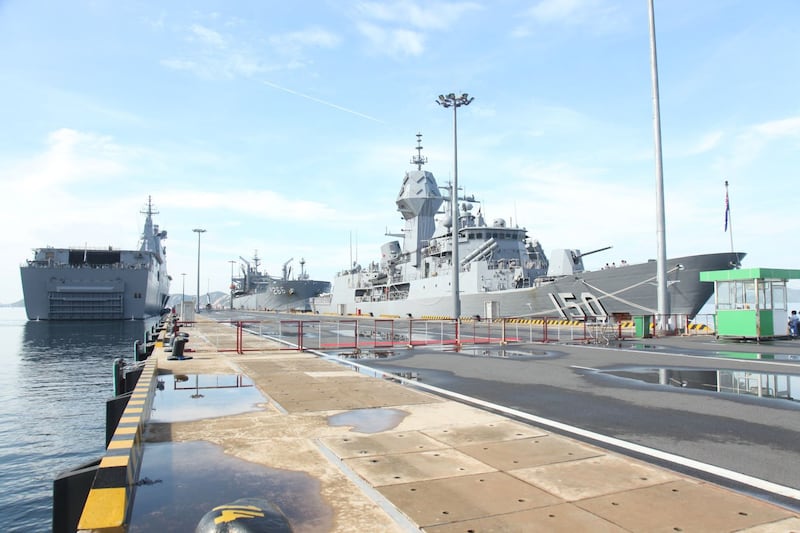Three Australian naval ships arrived in Cam Ranh port in central Vietnam on Monday as part of Canberra’s push to engage with partners in Southeast Asia, Vietnamese state media reported.
The deployment came as Australia’s foreign ministry sought to reassure the region that a new security pact with the United Kingdom and the United States, unveiled last week, would not sideline the Association of Southeast Asian Nations (ASEAN), and would not fuel the spread of nuclear weapons.
The Australian maritime task group arrived in the Vietnamese port for a four-day stopover after visiting Brunei, Singapore, Malaysia and Thailand. It comprised the amphibious assault vessel HMAS Canberra, the frigate HMSA Anzac, and the replenishment ship HMAS Sirius.
According to the Vietnamese People's Army mouthpiece Quan Doi Nhan Dan, the Australian ships together with Vietnamese partners will "conduct activities to enhance bilateral cooperation between the two navies." It is unclear which activities will be held.
Vietnam is currently suffering from a surge of COVID-19 infections and a welcome ceremony by the Vietnamese Naval Zone 4 for the Australian ships was held virtually.
Just a few days earlier, the Australian government announced that the country’s navy would acquire at least eight nuclear-powered submarines under the new trilateral security partnership with the U.K. and the U.S., called AUKUS.
The pact is widely seen as a deterrent to China’s growing military influence in the Indo-Pacific region, especially in the South China Sea where China’s sweeping claims are disputed by neighboring countries including Vietnam.
China has denounced the pact. Southeast Asian nations have reacted cautiously and a little warily. Malaysia and Indonesia have voiced concerns it might stoke an arms race in the region.
Australia’s ambassador to ASEAN, Will Nankervis, pushed back against those concerns on Monday.
“While these submarines will be nuclear powered, they will not carry nuclear weapons. Australia does not and will not seek such weapons. Nor do we seek to establish a civil nuclear capability,” he said in a statement.

Nankeris said Australia “is a strong proponent of a rules-based maritime order.”
“We support all countries being able to exercise their rights and freedoms consistent with the UN Convention on the Law of the Sea,” he said. The statement also described Australia as “a committed supporter of ASEAN centrality.”
The Australian Navy’s current swing through the region, dubbed Indo-Pacific Endeavour 2021, kicked off in late August to “provide an opportunity for Australia to engage with Southeast Asian partners beyond traditional military activities,” according to the Australian Department of Defence.
Commencing in 2017, Indo-Pacific Endeavour (IPE) is an annual event to “strengthen Australia’s engagement and partnerships with regional security forces” but it did not occur in 2020 due to the COVID pandemic.
Last week, the two Australian naval ships also conducted a three-day joint exercise in the South China Sea with U.S. coastguard vessel the USCG Cutter Munro. The joint engagement included "joint operations, professional exchanges, and multi-unit maneuvering at sea", according to the U.S. Coast Guard force.
Reported by RFA.
